
- 1. The Importance of Science in Improving Your Workout
- 2. The Role of Proper Warm-Up and Cool-Down
- 3. Creating a Balanced Workout Routine
- 4. Nutrition and Hydration: Key to Workout Success
- 5. Recovery and Rest: The Often Overlooked Factors
- 6. Consistency and Tracking Progress
- 7. Personal Stories and Success Examples
- 8. Recommendations for Improving Your Workout
1. The Importance of Science in Improving Your Workout
When it comes to improving your workout routine, understanding the science behind exercise can make a significant difference. Scientific studies provide evidence of the most effective methods for building strength, increasing endurance, and achieving overall fitness goals. By incorporating science-backed strategies into your workouts, you can optimize your performance, minimize injury risks, and see quicker results.
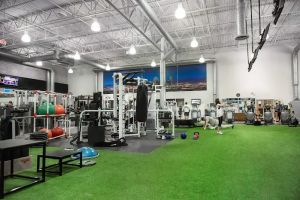
EōS Fitness / pal center in hockessin
ScottsdaleMaricopa CountyArizona
14843 N Northsight Blvd, Scottsdale, AZ 85260, USA
2. The Role of Proper Warm-Up and Cool-Down
A common mistake many people make when working out is skipping the warm-up and cool-down phases. According to research, warming up before a workout and cooling down afterward can significantly enhance performance and reduce the likelihood of injury.

F45 Training Pittsburgh Strip District / functional 45 locations
PittsburghAllegheny CountyPennsylvania
1625 Penn Ave Suite 101, Pittsburgh, PA 15222, USA
Why Warming Up is Essential
Warming up prepares your muscles, joints, and cardiovascular system for the demands of exercise. Studies have shown that a proper warm-up can increase blood flow to the muscles, improve flexibility, and reduce the risk of strains. For example, a dynamic warm-up that involves light aerobic exercises and movement-specific stretches can boost your heart rate and get your muscles ready for action.
The Importance of Cooling Down
Cooling down after a workout is just as important as warming up. This phase allows your heart rate and blood pressure to gradually return to normal, helping to prevent dizziness and fainting. Additionally, cooling down with stretches can help improve flexibility, decrease muscle soreness, and promote faster recovery. Incorporating a cool-down phase can improve your overall workout experience.
3. Creating a Balanced Workout Routine
To achieve optimal fitness results, your workout routine should be well-rounded and include a variety of exercises targeting different muscle groups. Research suggests that a balanced workout program should consist of cardiovascular exercise, strength training, and flexibility exercises.
Cardiovascular Exercise
Cardio exercises, such as running, cycling, or swimming, are key for improving cardiovascular health, burning calories, and increasing endurance. Science recommends incorporating at least 150 minutes of moderate-intensity aerobic exercise or 75 minutes of vigorous-intensity cardio per week for optimal heart health.
Strength Training
Strength training is essential for building muscle, boosting metabolism, and improving overall strength. Research shows that engaging in strength training exercises, such as weight lifting or bodyweight exercises, at least two to three times a week can improve muscle mass and bone density. Strength training also enhances the body’s ability to burn fat, even at rest.
Flexibility and Mobility
Incorporating flexibility and mobility exercises, such as yoga or static stretching, into your routine can help improve joint range of motion, reduce stiffness, and enhance posture. Regular stretching has been shown to prevent injuries by maintaining the health and flexibility of muscles and tendons.
4. Nutrition and Hydration: Key to Workout Success
Nutrition and hydration play a crucial role in fueling your body for optimal performance during workouts. Studies have found that consuming the right nutrients before and after exercise can enhance muscle recovery and prevent fatigue.
Pre-Workout Nutrition
Eating the right foods before a workout can provide your body with the necessary fuel. Carbohydrates are essential for providing energy during exercise, while protein helps to prevent muscle breakdown. Experts suggest consuming a balanced meal with complex carbs and protein about 1-2 hours before exercising.
Post-Workout Nutrition
After a workout, your body needs to replenish lost nutrients and support muscle recovery. Science supports consuming a combination of protein and carbs within 30-60 minutes post-workout to kickstart muscle repair and replenish glycogen stores. Hydration is also crucial, as water is needed to transport nutrients and regulate body temperature during exercise.
5. Recovery and Rest: The Often Overlooked Factors
While hard work in the gym is important, recovery is just as vital to improving your workout. Rest allows your muscles to repair, grow, and adapt to the stresses placed on them during exercise. Research emphasizes the importance of adequate sleep and rest days to prevent overtraining and enhance long-term performance.
Sleep and Muscle Recovery
Sleep is essential for muscle recovery and overall fitness progress. Studies show that growth hormone levels, which aid in muscle growth and repair, are highest during deep sleep. Aim for 7-9 hours of sleep per night to ensure your body has sufficient time to recover and rebuild muscle tissue.
The Power of Rest Days
Rest days allow your muscles to fully recover and repair themselves after intense workouts. Science recommends taking at least one or two rest days per week, depending on the intensity of your workouts, to prevent burnout and injuries.
6. Consistency and Tracking Progress
Consistency is key when it comes to improving your workout routine. Studies have shown that individuals who stay consistent with their workouts are more likely to see long-term results. Tracking your progress—whether through measurements, performance markers, or fitness apps—can help you stay motivated and focused on your goals.
Progressive Overload
Progressive overload is a key principle in exercise science. It involves gradually increasing the intensity or volume of your workouts to challenge your body and stimulate growth. By tracking your weights, sets, and reps, you can apply progressive overload effectively to keep improving.
7. Personal Stories and Success Examples
Many individuals have seen incredible improvements by following science-backed workout strategies. Take the case of Sarah, a 32-year-old who struggled with weight loss and strength training. By following a balanced routine, focusing on proper nutrition, and incorporating rest days, Sarah was able to improve her fitness significantly over six months, achieving both her strength and weight goals.
8. Recommendations for Improving Your Workout
To improve your workout and achieve better results, follow these recommendations:
- Incorporate a balanced routine with cardio, strength training, and flexibility exercises.
- Ensure proper warm-up and cool-down before and after each workout.
- Stay hydrated and fuel your body with the right nutrients before and after exercise.
- Prioritize sleep and rest for optimal recovery and muscle growth.
- Track your progress and apply progressive overload to continually challenge your body.
For more expert tips, workout gear, and fitness products, check out Hot Fitness to help elevate your fitness journey and get the best recommendations for your workouts.
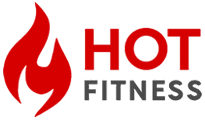
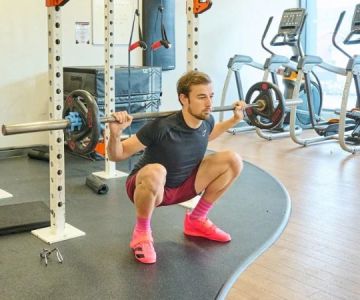





 Orangetheory Fitness4.0 (164 reviews)
Orangetheory Fitness4.0 (164 reviews)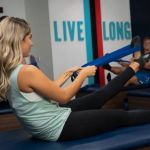 StretchLab5.0 (218 reviews)
StretchLab5.0 (218 reviews) Ryse Up Fitness Studio5.0 (25 reviews)
Ryse Up Fitness Studio5.0 (25 reviews) I•D Pilates5.0 (16 reviews)
I•D Pilates5.0 (16 reviews)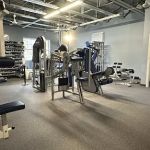 Lake Region Fitness4.0 (22 reviews)
Lake Region Fitness4.0 (22 reviews)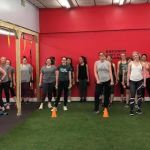 Zug Elite Training5.0 (7 reviews)
Zug Elite Training5.0 (7 reviews) Top 5 Myths About Fitness You Need to Stop Believing
Top 5 Myths About Fitness You Need to Stop Believing Top 10 Mistakes to Avoid in Bodyweight Training
Top 10 Mistakes to Avoid in Bodyweight Training Beginner’s Guide to Yoga: Tips, Poses, and Practices for Starting Your Journey
Beginner’s Guide to Yoga: Tips, Poses, and Practices for Starting Your Journey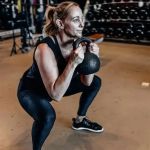 Strength Training for Women Over 40: Building Bone, Muscle and Confidence This Fall
Strength Training for Women Over 40: Building Bone, Muscle and Confidence This Fall Beginner’s Guide to Gym: Starting Your Fitness Journey Right | Hot Fitness
Beginner’s Guide to Gym: Starting Your Fitness Journey Right | Hot Fitness Why HIIT is the Secret to Your Success – Ultimate Guide to High-Intensity Training
Why HIIT is the Secret to Your Success – Ultimate Guide to High-Intensity Training